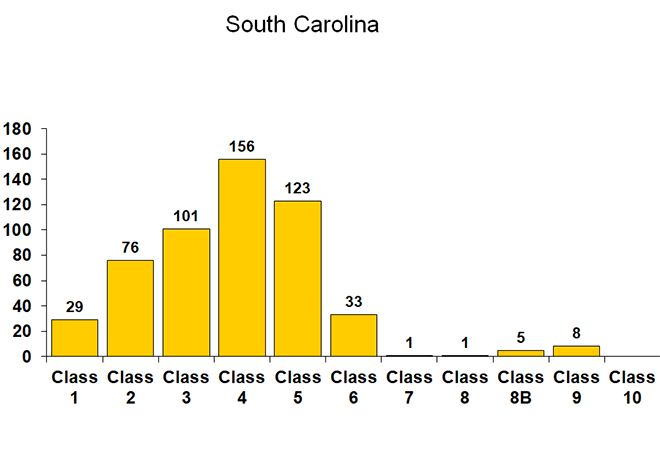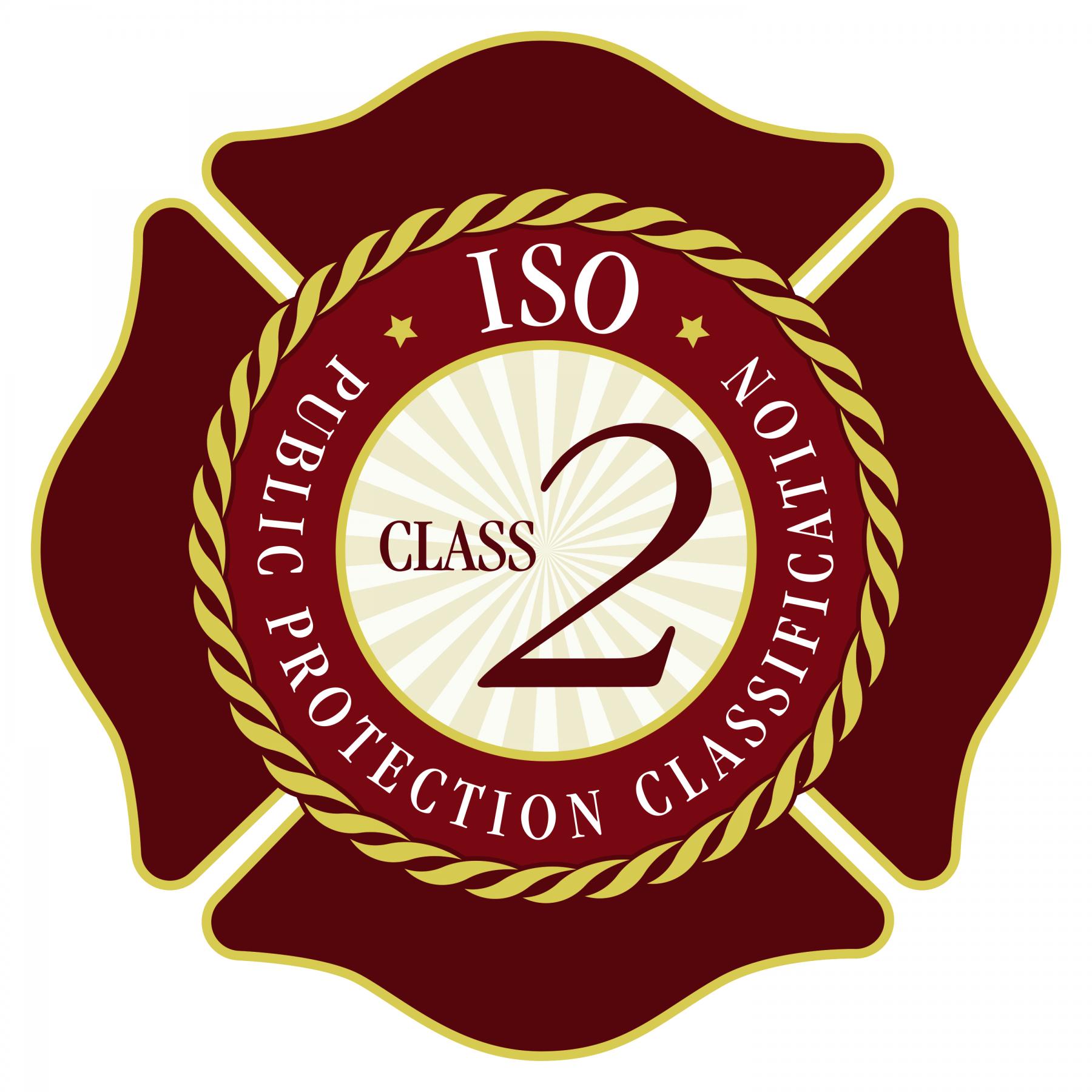The Public Protection Classification (PPC®) program recognizes the efforts of communities to provide fire protection services for citizens and property owners. A community’s investment in fire mitigation is a proven and reliable predicator of future fire losses. Insurance companies use PPC information to help establish fair premiums for fire insurance — generally offering lower premiums in communities with better protection. By offering economic benefits for communities that invest in their firefighting services, the program provides an additional incentive for improving and maintaining public fire protection.

The program also provides help for fire departments and other public officials as they plan, budget for, and justify improvements.
The most significant benefit of the PPC program is its effect on losses. Statistical data on insurance losses bears out the relationship between excellent fire protection — as measured by the PPC program — and low fire losses. PPC helps communities prepare to fight fires effectively.
The purpose of an ISO public protection survey is to gather information to determine a Public Protection Classification (PPC®), which insurers use for underwriting and to calculate premiums for fire insurance. The Fire Suppression Rating Schedule (FSRS) recognizes fire-protection features only as they relate to suppression of fires in structures.
In many communities, fire suppression may be only a small part of the fire department's overall responsibility. ISO recognizes the dynamic and comprehensive duties of a community’s fire service. We understand the complex decisions a community must make in planning and delivering emergency services. However, we evaluate only features related to reducing property losses from fire.

When ISO develops a single Public Protection Classification (PPC®) for a community, all community properties receive that classification. However, in many communities, we develop split classifications, which we revised in 2013 to reflect the risk of loss more precisely. An example of the split classification is 4/4X or 4/4Y. The first number refers to the classification of properties within 5 road miles of a fire station and within 1,000 feet of a creditable water supply. The second number, with either the X or Y designation, applies to properties within 5 road miles of a fire station but beyond 1,000 feet of a creditable water supply. ISO generally assigns Class 10 to properties beyond 5 road miles.
The X and Y classifications replace the former 9 and 8B portions of a split classification, respectively. For example, a community formerly graded as a split 6/9 will change to a split 6/6X. Similarly, a community formerly graded as a split 6/8B classification will change to a split 6/6Y classification. Those designations reflect a reduction in fire severity and loss and have the potential to reduce property insurance premiums.
The Fire Suppression Rating Schedule (FSRS) is a manual containing the criteria ISO uses in reviewing the fire prevention and fire suppression capabilities of individual communities or fire protection areas. The schedule measures the major elements of a community’s fire protection system and develops a numerical grading called a Public Protection Classification (PPC®).
Our FSRS employs nationally accepted standards developed by such organizations as the National Fire Protection Association (NFPA), the American Water Works Association (AWWA), and the Association of Public-Safety Communications Officials (APCO) International. When those organizations update their standards, the ISO evaluation changes as well. The PPC program always provides a useful benchmark that helps fire departments and other public officials measure the effectiveness of their efforts — and plan improvements.
How the FSRS works
The FSRS lists a large number of items (facilities and practices) that a community should have to fight fires effectively. The schedule is performance based and assigns credit points for each item. Using the credit points and various formulas, ISO calculates a total score on a scale of 0 to 105.5.
To receive certain PPC ratings, a community must meet minimum criteria. After a community meets those criteria, the PPC rating depends on the community’s score on the point scale. For more information, see:
- Minimum Facilities and Practices to Get a PPC Rating
- Minimum Criteria for Class 9
- Minimum Criteria for Class 8B
- Minimum Criteria for Class 8 or Better
- Scores and PPC Ratings
The FSRS considers three main areas of a community’s fire suppression system: emergency communications, fire department (including operational considerations), and water supply. In addition, it includes a Community Risk Reduction section that recognizes community efforts to reduce losses through fire prevention, public fire safety education, and fire investigation.
Emergency communications
A maximum of 10 points of a community’s overall score is based on how well the fire department receives and dispatches fire alarms. Our field representatives evaluate:
- the emergency reporting system
- the communications center, including the number of telecommunicators
- computer-aided dispatch (CAD) facilities
- the dispatch circuits and how the center notifies firefighters about the location of the emergency
Fire department
A maximum of 50 points of the overall score is based on the fire department. ISO reviews the distribution of fire companies throughout the area and checks that the fire department tests its pumps regularly and inventories each engine and ladder company’s equipment according to NFPA 1901. ISO also reviews the fire company records to determine factors such as:
- type and extent of training provided to fire company personnel
- number of people who participate in training
- firefighter response to emergencies
- maintenance and testing of the fire department’s equipment
Water supply
A maximum of 40 points of the overall score is based on the community’s water supply. This part of the survey focuses on whether the community has sufficient water supply for fire suppression beyond daily maximum consumption. ISO surveys all components of the water supply system. We also review fire hydrant inspections and frequency of flow testing. Finally, we count the number of fire hydrants that are no more than 1,000 feet from the representative locations.
Community risk reduction
The Community Risk Reduction section of the FSRS offers a maximum of 5.5 points, resulting in 105.5 total points available in the FSRS. The inclusion of this section for “extra points” allows recognition for those communities that employ effective fire prevention practices, without unduly affecting those who have not yet adopted such measures. The addition of Community Risk Reduction gives incentives to those communities who strive proactively to reduce fire severity through a structured program of fire prevention activities.
The areas of community risk reduction evaluated in this section include:
- fire prevention
- fire safety education
- fire investigation
For more information on any topic related to the Public Protection Classification (PPC®) program or the Fire Suppression Rating Schedule, Contact ISO Mitigation, or call the ISO mitigation specialists at 1-800-444-4554.

 The Orangeburg Department of Public Safety underwent an evaluation in 2017 and improved to a ISO Class 2/2X designation from the previous ISO Class 3.
The Orangeburg Department of Public Safety underwent an evaluation in 2017 and improved to a ISO Class 2/2X designation from the previous ISO Class 3.